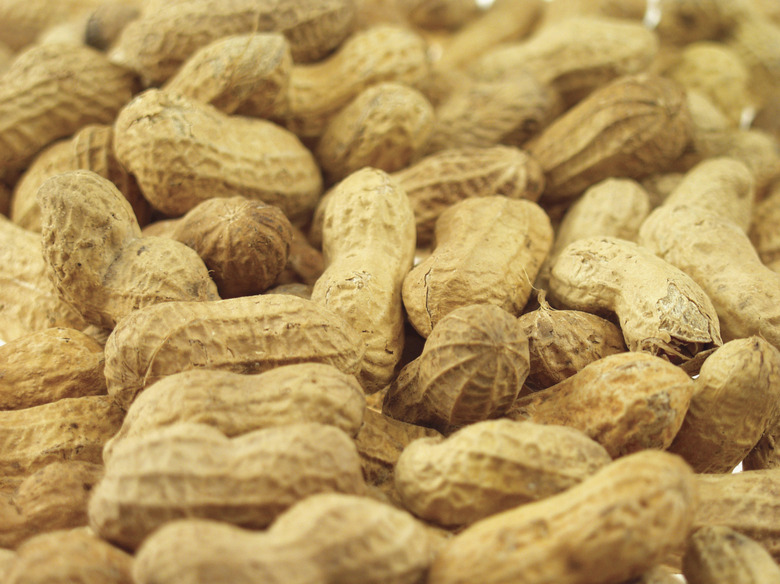What Is A Good Climate For Growing Peanuts?
Peanuts (Arachis hypogaea) are native to South America and thrive in the hot, long summers much of the continent provides. But you can grow peanuts even if you don't live in a tropical climate. Hardy in U.S. Department of Agriculture plant hardiness zones 5b through 10b, peanuts are adaptable to a range of climates.
Temperature
Step 1
Temperature plays an important role in peanut growth and production. While they prefer warm weather, peanuts are frost tolerant and able to grow in areas with an average low winter temperature of -15 degrees Fahrenheit. Peanuts reach their peak growing performance in soil temperatures between 70 and 80 degrees Fahrenheit. You can help maintain soil temperature by laying down a 2-inch layer of mulch on top of your soil. (If growing peanuts in a cooler climate, plant them on a south-facing wall to get the most heat.) Flower formation is damaged in temperatures above 93 degrees Fahrenheit and growth stops completely in temperatures below 57 degrees Fahrenheit.
- Peanuts (Arachis hypogaea) are native to South America and thrive in the hot, long summers much of the continent provides.
- While they prefer warm weather, peanuts are frost tolerant and able to grow in areas with an average low winter temperature of -15 degrees Fahrenheit.
Water
Step 1
Peanuts are drought tolerant and should be planted after heavy rainfall has stopped for the year. While they are able to withstand a week of flooded soil, it should drain well so that rhizome growth isn't affected by water-logged soil. On average, your peanuts should be given an inch of water once a week, but water them deeply whenever the first inch of soil is dry. You can provide humidity for your peanuts by laying rocks on top of your soil and spraying them with water during the afternoon.
Sunlight
Step 1
Peanuts do best in full sun (unobstructed sunlight for most of the day), but can tolerate partial shade (some shade for up to half the day) as well. When planted in the shade, peanut leaves will become larger and will produce fewer reproductive organs, but yield will not suffer unless planted in a very shaded area.
Soil
Step 1
Peanuts do best in well-drained, light, sandy loam soils. Clay, rocky, and other hard soils should be avoided because they retain water and can freeze in low temperatures, damaging rhizomes. Hard soil can also lead to malformed peanuts, to pods to breaking off and more difficult harvests. Amending your soil by tilling in 4 to 6 inches of organic matter will help with water drainage and soil density. A pH level of 6.0 tp 6.5 (slightly acidic) is ideal, but anything between 5.5 to 7.0 is acceptable.
- Peanuts are drought tolerant and should be planted after heavy rainfall has stopped for the year.
- While they are able to withstand a week of flooded soil, it should drain well so that rhizome growth isn't affected by water-logged soil.
References
- Sunset Western Garden Book of Edibles; Jim McCausland
- Gardenality: USDA/ Sunset Zones Climate Conversion Chart
- Naturland: Peanuts
- University of Florida Extension: Perennial Peanut Establishment Guide
- United States Department of Agriculture: Plant Hardiness Zone Map
